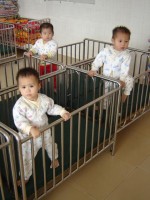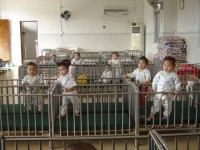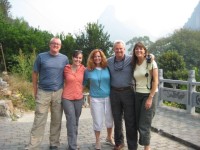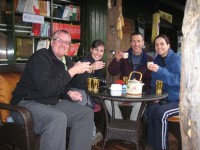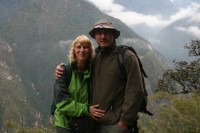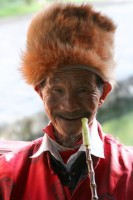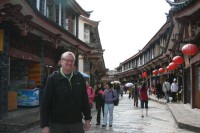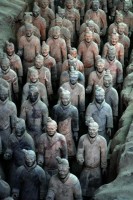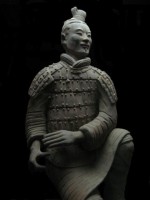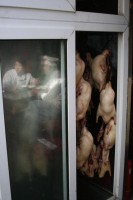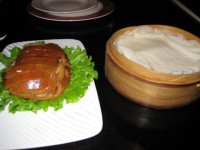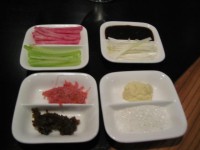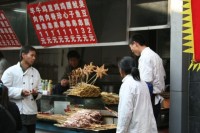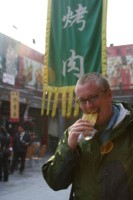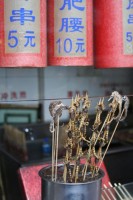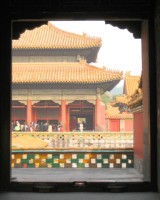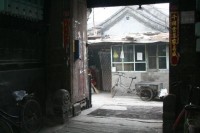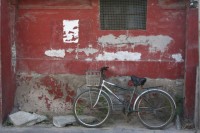It was time to escape from the polluted cities of China.
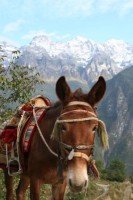
While I’ve always loved the city life, there is an unequalled joy of exiting the urban sprawl and heading to the mountains. I guess that love started for me at an early age, as my family hooked up the pop-up camper and hit the road to explore national parks and KOAs throughout America. Many of my fondest memories occurred by the campfire toasting hot dogs (we called them weenies) and marshmallows. I would kill for just a couple of s’mores right now.
After a couple of days in Lijiang, we caught the 8:30 a.m. bus to Qiaotou, a small town near the start of the Tiger Leaping Gorge. During the 2 hour bus ride, the concrete buildings we were used to seeing started to disappear and snow-capped mountains soon followed.
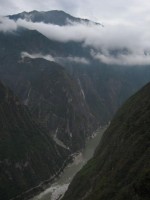
The Tiger Leaping Gorge is one of the deepest gorges (or canyons) in the world, having a depth of over 10,000 feet in some places – approximately twice the depth of the Grand Canyon. The gorge, which only runs for 8 miles, is split by the great Yangtze River – the longest river in Asia and the third largest river in the world. Tiger Leaping Gorge received its unusual name due to its width, which narrows to around 100 feet in at least one place. Legend has it that a tiger jumped the river at its narrowest point to escape an approaching hunter.
From reports we’d heard, the hike through the Tiger Leaping Gorge is not to be taken lightly. In fact, several people have died in recent years attempting the hike during bad conditions. The trail is very narrow at points, with huge drop-offs just inches away. All the guidebooks insist that you only go when the weather is good. Luckily, we avoided the rain. Nonetheless, parts of the trail ran right under flowing waterfalls that required careful footwork in order to avoid a fatal slip.

Upon arriving in Quaitou, we immediately hit the trail. The trek can be easily done in 2 days; however, we had time on our hands and wanted to truly appreciate the beauty of the gorge. After hiking 2 hours, we stopped at the Naxi Family Guesthouse, a small guesthouse in a village inhabited by the local Naxi people. Our hosts set us up in a basic room with hot water (a huge plus). While there wasn’t any heating, we were provided with an electric blanket and Shanna stole 2 extra blankets from an empty room down the hall.
We had a relaxing afternoon and evening exploring the local village and sharing travel stories and fried rice with our new friends from the Czech Republic and Boston. We also met a family from Montreal, Canada who was traveling around the world for a year with 3 daughters (ranging in age from around 8 to 14)! Very impressive!

Day 2 of the hike was the most challenging, requiring us to climb the “24 bends” – bends that curve straight up the mountain. After conquering the bends and reaching the summit, we were rewarded with an amazing view and a mostly flat to downhill hike for the rest of the day. A few hours later, we arrived at Halfway Guesthouse. This guesthouse received some notoriety after Michael Pallin (a British actor made famous from Monty Python films and now a star of several series following him on journeys throughout the world) stayed here during his filming of “Himalaya” – a fantastic series that Shanna and I watched before we left on our trip (it’s available at the Green Hills Library in Nashville). Day 3 was short – a 2-hour hike to a small town where we caught a ride back to Lijiang.

For nature lovers, the hike is not to be missed. The scenery is stunning. At one point, I had Shanna convinced that the word “gorgeous” was coined by an English explorer who visited the Gorge hundreds of years ago. The height of the gorge walls is hard to comprehend. It wasn’t until I saw a bus – the size of an ant from our vantage point – driving along a road at the bottom of the gorge that its size fully sunk in. I found myself torn between gazing at the impossible beauty of the gorge and watching the trail before me to ensure I didn’t slip down a 3,000 foot ravine – or run into one of the many mountain goats we spotted along the trail.
Like so many places I’ve encountered during my years of travel, Tiger Leaping Gorge is a place to be visited soon. As we humans continue to feed our need for power and resources, many natural wonders are in danger. Based on stories I’ve read, there is a strong chance that a dam will soon be built near the Gorge that will virtually stop the flow of the Yangtze River in the gorge and displace approximately 100,000 of the Naxi people who live in the area. Hopefully, the powers that be will come to their wits and avoid destroying one of the truly “gorge”ous places on this planet.
Below is a video of our hike through the gorge, set to music. I’m sure some of my guy friends (especially Kevin Howard and Jeremy Stephens) will be touched by the music, so you might want to have tissues nearby.
[embedplusvideo height=”350″ width=”450″ editlink=”http://bit.ly/1tasHIC” standard=”http://www.youtube.com/v/6JZylfR4L2w?fs=1″ vars=”ytid=6JZylfR4L2w&width=450&height=350&start=&stop=&rs=w&hd=0&autoplay=0&react=1&chapters=¬es=” id=”ep9076″ /]
